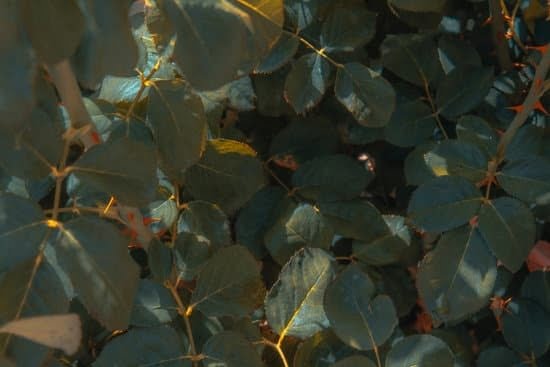Are you looking for gardening ideas for small places? Even with limited space, it is possible to create a beautiful and bountiful garden. From choosing the right plants to maximizing vertical space and creating an indoor oasis, there are numerous ways to explore the beauty of gardening in small spaces. In this article, we will delve into various creative ideas for gardening in small areas, including tips for low-maintenance solutions and urban gardening.
When it comes to gardening in small spaces, the key is to be strategic in plant selection and design. Whether you have a tiny balcony, rooftop, or small backyard, there are plenty of options for creating a vibrant and thriving garden. From compact vegetable varieties to utilizing hanging planters and trellises, there are endless possibilities to make the most out of your limited space.
In addition to practical tips on container gardening and making the most of vertical space, we will also explore the potential of creating a mini indoor garden. Bringing the beauty of nature indoors can provide a sense of tranquility and connection to the outdoors, even in the smallest of living spaces. Get ready to unleash your creativity and embrace the potential of small spaces for stunning gardens.
Choosing the Right Plants for Small Spaces
When it comes to gardening in small spaces, choosing the right plants is crucial to maximizing the area and ensuring a successful harvest. Whether you have a tiny balcony or a compact backyard, there are plenty of options for filling your space with greenery and delicious produce. Here are some gardening ideas for small places when it comes to selecting the perfect plants:
- Herbs: Herbs are an excellent choice for small spaces due to their compact size and versatility. Consider planting herbs like basil, mint, chives, and thyme in window boxes, hanging planters, or small pots on your kitchen counter.
- Compact vegetable varieties: Many vegetables have been bred specifically for small spaces and containers. Look for dwarf or bush varieties of tomatoes, peppers, cucumbers, and eggplants that can thrive in limited space.
- Microgreens: These tiny but nutrient-packed greens are perfect for indoor gardening. They can be grown in shallow trays or containers and harvested as needed for fresh salads and garnishes.
By choosing the right plants for your small space, you can enjoy a bountiful garden no matter how limited your area may be. With careful selection and strategic placement, even the smallest garden can yield plenty of fresh herbs and vegetables throughout the growing season.
In addition to choosing compact plants, consider incorporating vertical gardening techniques to make the most of your limited space. Utilizing walls, trellises, and hanging planters can help you maximize your growing area while adding visual interest to your small garden. With the right plant selection and creative use of space-saving techniques, anyone can enjoy a flourishing garden in even the tiniest of locations.
Maximizing Vertical Space
When it comes to gardening in small spaces, utilizing every inch of space is crucial. Maximizing vertical space is one of the best ways to make the most of a compact area and create a lush and vibrant garden. One effective way to do this is by using hanging planters, trellises, and wall-mounted pots. These solutions not only add visual interest to the garden but also allow for more plants to thrive in limited square footage.
Hanging planters are an ideal option for small gardens as they can be suspended from ceilings or hooks, freeing up valuable ground space. They are perfect for growing trailing plants, such as ivy, pothos, or spider plants. Similarly, trellises provide support for climbing plants like tomatoes, cucumbers, or peas. By training these plants to grow vertically, gardeners can take advantage of unused vertical areas and maximize their harvest.
Another popular choice for small space gardening is wall-mounted pots. These options come in a variety of designs and materials and can be affixed to fences, walls, or vertical structures. This allows for the addition of greenery without encroaching on precious floor space.
Incorporating these vertical gardening ideas for small places not only adds flora and fauna but also gives the illusion of a larger and more expansive garden area. By carefully selecting the right plants and containers for vertical gardening, enthusiasts can transform even the tiniest urban balcony or rooftop into a thriving green oasis.
| Vertical Gardening Method | Ideal Plants |
|---|---|
| Hanging Planters | Trailing plants like ivy or pothos |
| Trellises | Climbing vegetables such as tomatoes and cucumbers |
| Wall-Mounted Pots | A variety of herbs, flowers, or succulents |
Small Space Container Gardening
When it comes to gardening in small spaces, container gardening is an ideal option for those with limited outdoor space. With the right containers and soil, you can create a beautiful garden even in the smallest of areas. Here are some tips for selecting the right containers and soil for small space container gardening:
- Choose the Right Containers: When it comes to small space container gardening, choosing the right containers is crucial. Opt for containers that are appropriate for the size of the plants you want to grow. For example, shallow-rooted plants like lettuce or herbs can thrive in smaller pots, while deep-rooted vegetables such as tomatoes or peppers will need larger containers.
- Consider Drainage: Proper drainage is essential for container gardening. Look for pots with drainage holes at the bottom to prevent waterlogging, which can be detrimental to your plants’ health.
- Soil Selection: Selecting the right soil is also important for successful small space container gardening. Use a high-quality potting mix that is well-draining and nutrient-rich. Avoid using regular garden soil, as it may not provide adequate aeration and drainage for your potted plants.
In addition to selecting the right containers and soil, proper maintenance is also key to thriving container gardens in small spaces. Regular watering, fertilizing, and monitoring for pests and diseases are essential to ensure healthy plant growth. By carefully considering your container and soil choices, you can create a thriving garden even in the smallest of spaces.
Whether you have a tiny balcony or a compact patio, utilizing these small space container gardening ideas can help you turn your limited outdoor area into a green oasis bursting with life and color. With some creativity and careful planning, anyone can enjoy the beauty of gardening in small places.
Creating a Mini Indoor Garden
When it comes to gardening ideas for small places, creating a mini indoor garden is a perfect way to bring the beauty of nature into your home. Not only does it provide a touch of greenery and freshness to your living space, but it also has numerous health benefits, including reducing stress and improving air quality.
Choosing the Right Plants
When selecting plants for your indoor garden, it’s essential to consider factors such as the amount of natural light available, temperature, and humidity levels. Opt for low-maintenance plants like succulents, cacti, or air plants that thrive in indoor environments. Herbs like basil, mint, and rosemary are also great choices for an indoor garden as they not only add greenery but are also useful for cooking.
Maximizing Space
In a small indoor area, using hanging planters or installing wall-mounted pots can help maximize space and create an attractive vertical display. Consider placing shelves near windows or on empty walls to showcase your plant collection. Additionally, utilizing decorative trellises or hooks can add visual interest while keeping plants off the floor.
Maintenance Tips
Watering and maintaining an indoor garden may seem daunting in limited spaces. However, with proper planning and organization, it can be manageable. Consider investing in self-watering pots or incorporating a drip irrigation system to ensure that your plants receive the right amount of water without causing a mess. Also, regularly check and monitor the light conditions in different areas of your home to ensure that each plant receives adequate sunlight.
By creating a mini indoor garden in your small space, you can enjoy all the benefits of gardening without needing a large outdoor area. With careful plant selection, effective use of space, and maintenance tips, you can transform your home into a green oasis that brings joy and tranquility into your life.
Creative Garden Design Ideas
When it comes to gardening ideas for small places, creative garden design is essential in making the most of limited space. One great way to maximize small spaces is by incorporating small pathways, seating areas, and focal points. By strategically placing these elements, you can create a visually appealing and functional garden area.
Small pathways can help create the illusion of depth in a small garden. By using narrow paths made of stepping stones or gravel, you can lead the eye through different areas of the garden and create a sense of exploration. Additionally, small pathways can also help define different gardening zones within a limited space.
Seating areas are another important element to consider when designing a small garden. Even in a compact space, creating a cozy nook with a bench or some chairs can make the garden more inviting and enjoyable. This is especially important if you want to use your small garden as an outdoor relaxation or entertainment area.
Finally, focal points such as sculptures, water features, or unique plant arrangements can add visual interest to a small garden. These elements draw attention and create impact in limited spaces. When choosing focal points for your garden, be sure to select items that resonate with your personal style and add to the overall aesthetic of the space.
| Garden Design Element | Role in Small Garden |
|---|---|
| Small Pathways | Create depth and define different zones |
| Seating Areas | Adds functionality and creates inviting space |
| Focal Points | Add visual interest and impact |
Low-Maintenance Gardening for Small Spaces
Are you a busy individual with limited time, but still want to enjoy the beauty of gardening in your small space? No need to worry, as there are plenty of low-maintenance gardening ideas for small places that can help you create a beautiful and flourishing garden without requiring too much of your time.
Choose Easy-to-Care-for Plants
When it comes to low-maintenance gardening, it’s essential to choose plants that require minimal care. Opt for resilient plants such as succulents, cacti, and native wildflowers that are well-suited to your climate. These plants are typically drought-resistant and can thrive with minimal watering and attention, making them perfect for the busy gardener.
Implement Smart Watering Strategies
Watering can be a time-consuming task in gardening, especially in small spaces. Consider utilizing drip irrigation systems or self-watering containers to ensure that your plants receive the right amount of moisture without constant monitoring. Additionally, grouping plants with similar water needs together can simplify your watering routine and save time.
Utilize Low-Maintenance Garden Design
Incorporate low-maintenance design elements into your small garden by opting for perennial plants that come back year after year, reducing the need for replanting. Create simple pathways using gravel or stepping stones to minimize the need for frequent maintenance. By carefully designing your garden layout with low-maintenance features, you can enjoy a beautiful garden without the constant upkeep.
By implementing these low-maintenance gardening ideas for small places, busy individuals can still experience the joy of gardening without feeling overwhelmed by the time commitment. With smart plant choices, efficient watering strategies, and thoughtful design, creating a thriving garden in a small space can be both manageable and rewarding. So don’t let limited time hold you back from enjoying the wonders of gardening – embrace these low-maintenance techniques and watch your small space transform into a green oasis.
Urban Gardening Solutions
When it comes to urban gardening, making the most of balcony or rooftop spaces is essential for those with limited outdoor areas. With the right approach, even the smallest balconies and rooftops can be transformed into flourishing gardens. There are numerous gardening ideas for small places that can help maximize these spaces and create beautiful green oases in the midst of city living.
One of the key strategies for urban gardening in small spaces is to utilize vertical space effectively. This can be achieved through the use of hanging planters, trellises, and wall-mounted pots. By growing plants vertically, you can make use of otherwise unused space and maximize the number of plants you can grow. Additionally, using lightweight containers and supports can help prevent damage to balcony or rooftop surfaces.
Another important aspect of urban gardening solutions for small spaces is choosing the right plants. Compact vegetable varieties, herbs, and dwarf fruit trees are excellent choices for balcony or rooftop gardens. These plants not only thrive in containers but also provide a bountiful harvest despite limited space. Consider planting a variety of herbs for culinary purposes or selecting vegetables that are well-suited to container gardening.
In addition to selecting the right plants and utilizing vertical space, it’s also crucial to consider the overall design of your balcony or rooftop garden. Incorporating small pathways, seating areas, and focal points can help create a welcoming and functional outdoor space. By carefully planning the layout and design of your garden, you can make the most of every inch of available space while creating a relaxing retreat in the midst of an urban environment.
Conclusion
In conclusion, small spaces should not be seen as limitations when it comes to gardening. Instead, they offer unique opportunities for creativity and innovation. By carefully selecting the right plants, maximizing vertical space, utilizing container gardening, and incorporating creative design ideas, individuals can transform even the smallest of areas into beautiful and bountiful gardens. The key is to embrace the potential of small spaces and think outside the box when it comes to gardening.
One of the most important aspects of gardening in small spaces is selecting the right plants. From herbs to compact vegetable varieties, there are numerous options that thrive in confined areas. Additionally, maximizing vertical space through hanging planters, trellises, and wall-mounted pots allows for an abundance of greenery without taking up precious floor space. Furthermore, considering low-maintenance gardening solutions can be particularly beneficial for those with limited time or experience in gardening.
With a bit of creativity and resourcefulness, individuals can also create stunning mini indoor gardens to bring the beauty of nature into their homes. Whether it’s a small herb garden in the kitchen or a collection of air-purifying plants in the living room, indoor gardening adds a touch of natural beauty to any space.
Ultimately, by embracing these gardening ideas for small places and thinking creatively about design and maintenance, anyone can enjoy a flourishing garden no matter how limited their outdoor or indoor space may be.
Frequently Asked Questions
How Do You Maximize Space in a Small Garden?
Maximizing space in a small garden requires strategic planning and organization. Utilizing vertical space with trellises or hanging planters can help maximize growing area. Choosing compact or dwarf varieties of plants also helps make the most of limited space.
What Vegetable Gardens Grow in Small Spaces?
Many vegetables can thrive in small spaces, including tomatoes, peppers, lettuce, spinach, radishes, and herbs like basil and cilantro. These plants can be grown in containers, raised beds, or even vertically on walls or trellises to optimize space.
How Do You Arrange a Small Garden?
When arranging a small garden, it’s important to consider the needs of each plant in terms of sunlight, water, and spacing. Grouping together plants with similar requirements can help make the most efficient use of space. Additionally, incorporating paths and walkways that flow well throughout the garden can make it feel more spacious and inviting.

Welcome to my gardening blog! I am passionate about plants and enjoy sharing my knowledge and experiences with others. In this blog, I will write about everything related to gardening, from tips on how to get started to updates on my own garden projects.





